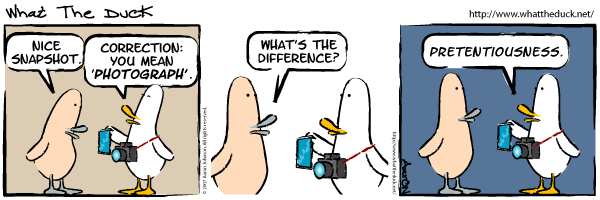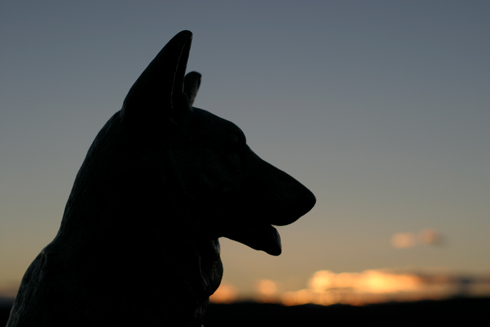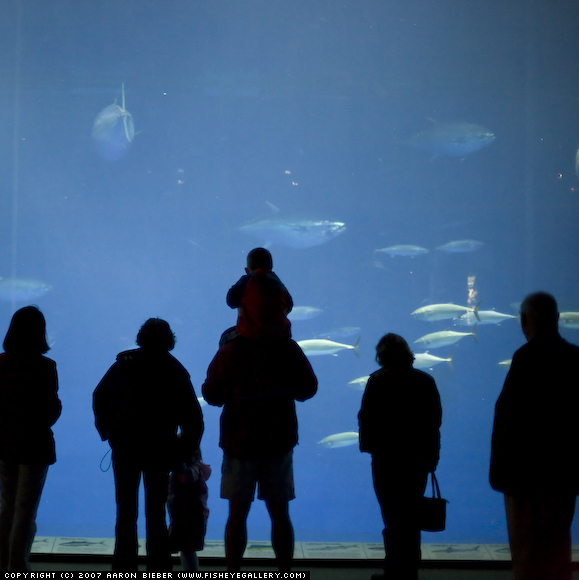Photography: What's the Point?

Thanks to Aaron Johnson of What the Duck for this eloquent visual synopsis of what I’ve been thinking about lately. Too often we get so deeply embroiled in our craft that we forget why we do it.
A debate has been raging for days on Usenet.org/wiki/Usenet over the question of whether photography is art and, if so, when it becomes art. Although the very discussion is futile and has no practical outcome, I do think it’s important to take a step back from what you’re doing and think about what it is you’re gaining from it. This is going to be a heady philosophical post so if that’s not your particular brand of vodka, read some photo news instead.
While reading related material in preparation for this post, I came across this quote by famed director and cinematographer Michelangelo Antonioni.org/wiki/Michelangelo_Antonioni that seemed relevant:
We know that behind every image revealed there is another image more faithful to reality, and in the back of that image there is another, and yet another behind the last one, and so on, up to the true image of that absolute, mysterious reality that no one will ever see.
If something more philosophical could be said about the visual arts, I would like to hear it. An essential characteristic of photography, and one that distinguishes it from other arts, is that you are forced to start with an image from superficial reality, whether that be candid, posed, documentary, still life, or something else; it must be placed before the lens and lit. A painter or a sculptor works within the limits of his or her materials, but the resulting form is summoned completely from their imagination, from their vision of the materials being configured in a certain way.

Because of this “limitation” ((Limiting only to the extent that a painter might be limited with paint.)) of photography, many people are drawn to it–as an art form–with the intention of reproducing a scene for its beauty, emotion, or both (particularly in landscape work) that is perceived by their eyes and minds. The key word there is “reproducing.” Only secondarily do photographers seek to create aesthetic contrivances of texture, form, and color, due to their preoccupation with staying faithful to their experience of the scenes as they experienced them in Antonioni’s mysterious reality. In such realism, the value of the work as art certainly does not decline; Ansel Adams’ entire career was spent realizing such scenic experiences on paper and to suggest that his legacy of printmaking is not art would be like telling Leonardo DaVinci that he can’t draw. Still, Adams’ work is a prime example of what a concern for pure compositional characteristics can bring to “observational” or “representational” photography (I use those words to differentiate Adams’ work from “abstract,” “documentary,” and other types of photography, not as editorial terms).
As a photographer, I am almost completely unconcerned with subject matter for what it is, but rather for what it looks like, and almost never in the classic sense of observance as is typically the case with landscapes (“Oooh, pretty mountains!”). The idea that photographs, or works of art in general, must be imbued with some palpable theme or emotional message is a preposterous concept made popular by professors and scholars whose time is spent analyzing art rather than creating it. Visual art is a powerful method of communicating themes and ideas, but such ability is not one that need be wielded just for the sake of it. My work is not abstract, as it does communicate the presence of objects and places that are recognizable, but I find my interest piqued most by the geometry, contrast, and texture of my subjects.

Part of my development as a photographer has involved moving slowly away from the urge to create images with some clear meaning simply for the emotional reaction they ilicit, and toward the creation of images for their pure compositional strengths. I went to school for graphic design and my love for it was never tied to the message but rather to its visual impact, pure and simple.
Each photographer I come in contact with has their own passion and their own preferred subject matter. Looking back through my own work I can see how my tastes have developed over time and, I like to think, my skills as well. Do you look back at your older work and see a change in preference toward your subject matter? Have you drastically changed directions as time went on? What are your favorite subjects to photograph, and what is it about them that makes photographing them exciting? What would you like to do more of in your work, or is there a genre you really want to break into?
These are great questions to ask yourself, but if you have a second, leave your answers in the comments as well so we all can have a chat about it.
 Single-Serving Photo
Single-Serving Photo
Comments